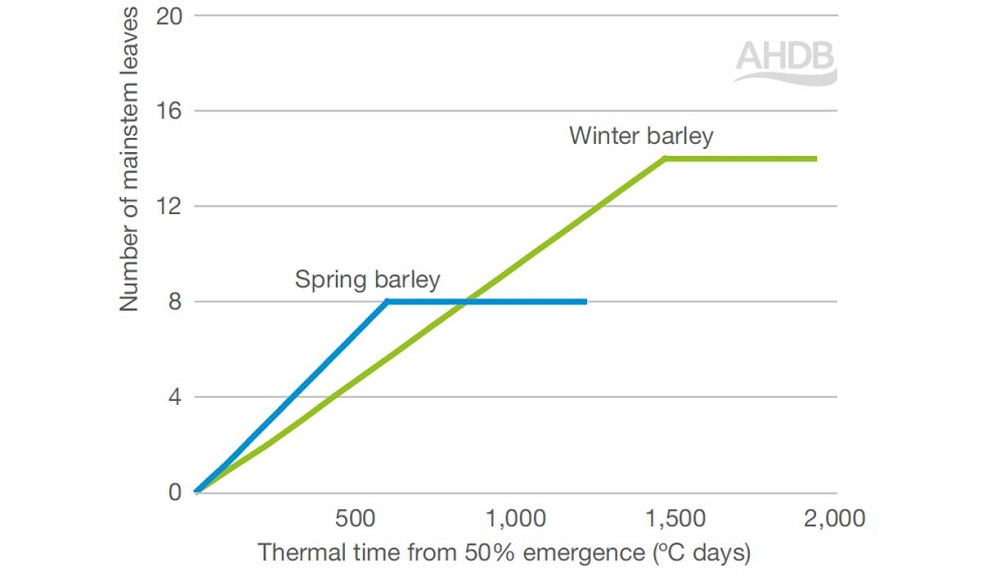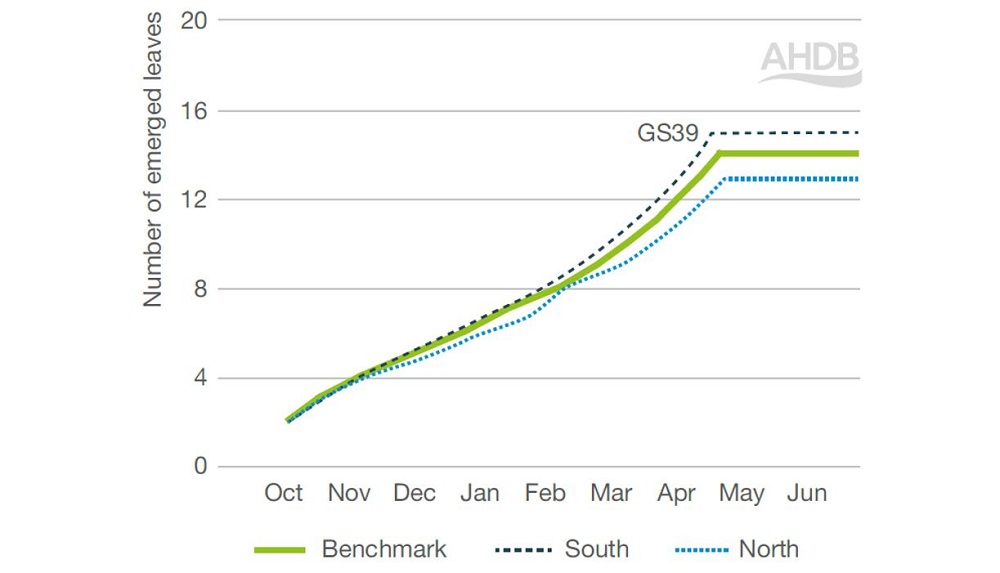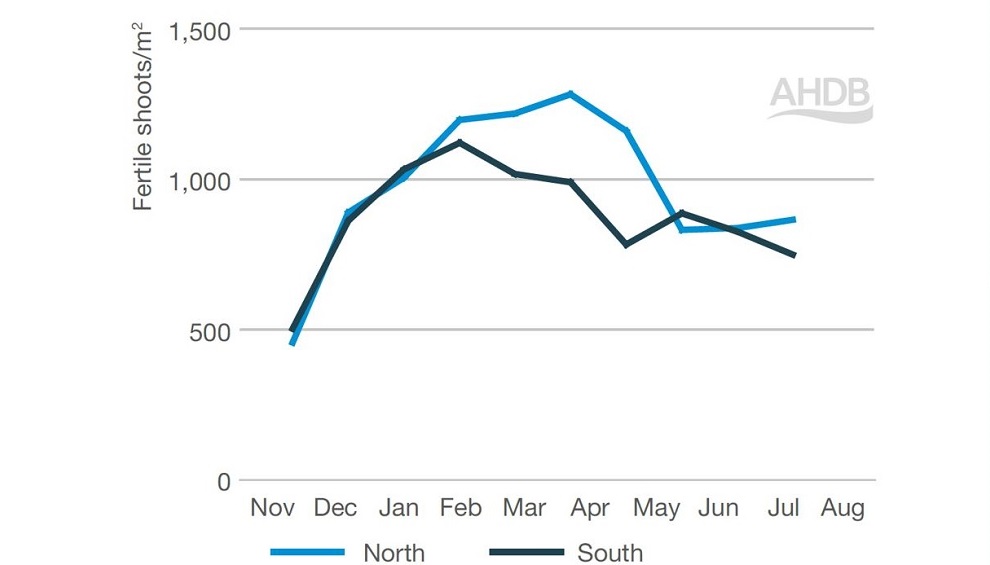- Home
- Knowledge library
- Leaf emergence and tillering growth stages in barley (GS1–G2)
Leaf emergence and tillering growth stages in barley (GS1–G2)
The production of leaves and tillers (side shoots) is an essential part of canopy development. Careful management is needed to optimise and protect these structures to help maximise barley yields.
Establishment in barley: germination and emergence (GS0–GS2)
Growth guides for wheat, barley and oilseed rape
Key facts about leaf emergence and tillering
- Temperature drives leaf emergence
- Leaves and tillers grow from initials (buds) produced by the stem apex before it switches to reproductive development (in response to vernalisation and day length changes)
- Tiller production and survival are affected by climate and husbandry
- Final ear-bearing shoot number is a key component of yield
- For winter barley, review nitrogen timing and rate to remedy low tiller numbers in spring
- For spring crops, promote rapid early growth to maximise tiller production and survival
- Ensure good weed control to reduce competition and maximise tiller production and survival
- Ensure fungicide strategies are implemented to prevent diseases from restricting shoot number
How to measure leaf emergence (phyllochron)
Benchmark: 108ºC days/leaf in winter barley (phyllochron) and 82°C days in spring barley
Varietal influence: Medium
Other influences: Sowing date, temperature
The first leaf emerges from the coleoptile soon after drilling.
Leaves emerge continuously on main stems and tillers, until the final (flag) leaf emerges.
Temperature drives leaf emergence. The time period, measured in thermal time (ºC days above a base temperature of 0ºC), between the emergence of two successive leaves is called the phyllochron.
Initially, winter barley leaves emerge rapidly during autumn. The rate slows over winter, then accelerates in spring until the final leaf emerges in May at growth stage 39.
Late-sown winter crops accumulate less thermal time to growth stage 39.
The phyllochron is smaller in later-sown crops, so the rate of leaf emergence is more rapid.
Varieties differ in the relative influence of day length and temperature on rate of leaf emergence.
 AHDB
AHDB
How to measure the phyllochron
To measure the phyllochron, tag the youngest, fully emerged leaf when plants have three fully emerged leaves, and again when they have seven fully emerged leaves. At the same time, note the proportion emerged of the next partially emerged leaf, as well as the date of tagging.
At growth stage 39 (flag leaf blade just visible), count the number of leaves that have emerged since the last tag was attached.
Use daily temperature data to calculate the thermal time taken for each leaf to emerge.
Leaf number in barley
Benchmark: Average number of leaves in winter barley = 14 (North = 13, South = 15)
Varietal influence: Low
Other influences: Sowing date, latitude
Late-sown winter crops have less time to initiate leaves before ear formation is triggered by cool weather in winter. For the same reason, crops usually produce fewer leaves at northern sites than at southern sites. Spring barley produces fewer leaves than winter barley.
 AHDB
AHDB
Factors that affect tiller production
Benchmark: Shoot numbers by GS30 in winter barley (2 April) = 1,180 shoots/m2
Varietal influence: Medium
Other influences: Sowing date, plant population, N supply
Tillering, which refers to the production of shoots in addition to the main stem, occurs after leaf 3 emerges and determines ears/m2 – an important yield component.
Tillering starts rapidly in the autumn, slows over winter and can resume in the spring as temperatures and nutrient availability improve. Tillering may occur later, during stem extension, if spring drought restricts water and nutrient availability before moist conditions return.
Reference crops tiller equally well at northern and southern sites. The process of tiller death begins earlier at southern sites but final ear numbers are usually similar at all locations.
 AHDB
AHDB
Influences on final shoot number
Benchmark: Final shoot number in winter barley = 775/m2 (3 shoots/plant)
Varietal influence: High
Other influences: Sowing date, plant population, N supply
The maximum shoot number usually exceeds final shoot number. Increasing competition for both light and nutrients results in smaller and younger tillers dying, which makes way for the main yield-forming shoots.
Generally higher dry matter at GS31 contributes to better survival rate of the shoots.
The maximum fertile shoot number is similar throughout the UK, but is reached earlier in the South.
In spring barley, final ear numbers can be similar in spring and winter varieties; however spring crops tend to produce fewer tillers. Maximising growth of tillers before stem extension increases their chance of surviving to form ears. Tiller production and survival are the most important factors determining yield in spring barley.
How to measure tiller numbers
To measure tiller numbers, follow the same method used to measure plant populations.
 Gary Naylor Photography.JPG)
Topics:
Sectors:
Tags:

